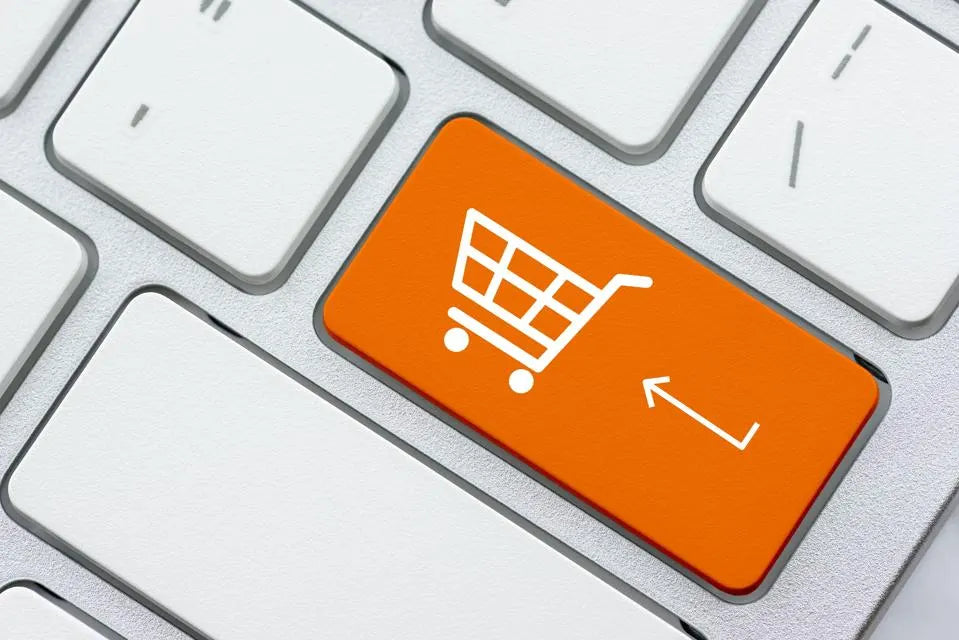In a recent study conducted by Zest Logic, we analyzed data from 3,000 e-commerce sites to uncover patterns in their marketing strategies. One glaring issue stood out: 80% of businesses aren’t effectively utilizing some of the most basic yet impactful marketing channels. This oversight leaves significant revenue potential on the table and puts them at a disadvantage compared to their competitors.
Today, we’re focusing on sales channels that deliver a high return on investment (ROI) but remain underutilized across the industry. These channels have industry benchmarks proving their effectiveness, yet many e-commerce managers haven’t unlocked their full potential. If you're ready to outpace your competitors, this guide is for you.
Why Ignoring Sales Channels Could Hurt Your Business
Some e-commerce managers shy away from new sales channels, assuming the investment will be too costly or complex. However, what many fail to realize is the cost of doing nothing. Competitors who adopt these channels early consistently see increased customer engagement and sales growth, leaving the hesitant players behind. In fact, studies show that businesses using diverse sales channels grow revenue 20-30% faster than those that don’t.
Failing to adapt doesn’t just slow growth—it actively harms your business. According to Forrester Research, 56% of consumers are more likely to shop with competitors who offer a seamless presence across multiple platforms. The lesson here is simple: not investing in modern marketing channels costs more in the long run than trying them out.
Social Media and E-commerce: A Growing Opportunity You Can’t Ignore
Social media is no longer optional for e-commerce—it’s essential. Platforms like Facebook, Instagram, and TikTok have become major sales channels, with consumers increasingly discovering, researching, and buying products directly through these apps. According to Hootsuite, 76% of people have purchased a product they discovered on social media, making it a prime opportunity for businesses.
By not leveraging social media, you’re missing out on a direct line to your customers. A recent report shows that businesses allocating over 20% of their marketing budget to social media see 2.4 times higher conversion rates. If you’re not prioritizing these platforms, it’s time to start.
Facebook remains the go-to platform for e-commerce. With over 2.9 billion active users, it offers unparalleled reach. Features like Facebook Shops allow businesses to showcase products directly on the platform, while targeted ads make it easier than ever to connect with specific demographics. Pro tip: Use Facebook’s Lookalike Audience feature to target users similar to your existing customers—it’s a game changer.

Instagram, with its visually-driven nature, is perfect for showcasing product aesthetics. A study by Statista revealed that 72% of users have purchased something after seeing it on Instagram. Features like shoppable posts and Stories give businesses creative ways to drive sales. Focus on high-quality images and leverage influencers to tap into your audience’s aspirations.

TikTok
TikTok is a rapidly growing platform for e-commerce, particularly among Gen Z and Millennials. The app boasts over 1 billion users, and trends like #TikTokMadeMeBuyIt highlight its sales potential. Short, engaging videos showcasing your product in action can go viral, driving massive traffic to your store. Keep it authentic—TikTok users favor raw, relatable content over polished ads.
Pinterest is a hidden gem for e-commerce managers. According to Omnicore, 85% of Pinners say the platform helps them plan purchases. It’s a goldmine for products in categories like fashion, home décor, and DIY. Optimize your pins with descriptive titles, keywords, and pricing information to boost visibility and drive clicks.
Snapchat
While often overlooked, Snapchat has a younger, highly engaged audience. With over 375 million daily active users, its ad formats like AR filters and Stories provide unique ways to showcase your products. Focus on limited-time promotions or exclusive content to capitalize on Snapchat’s “fear of missing out” (FOMO) culture.
What Can Online Stores Expect from Social Media in 2025?
By 2025, social media advertising is projected to account for over 40% of all e-commerce ad spend. Businesses are planning to invest heavily, with total global social media ad spending expected to surpass $200 billion.
The focus will increasingly shift toward personalized shopping experiences, with platforms like Instagram and TikTok integrating AI-driven tools for more tailored ads. If you’re not already planning to expand your social media strategy, now is the time to reconsider.
- Share behind-the-scenes content to humanize your brand.
- Post user-generated content to build trust.
- Use analytics tools to track performance and refine your approach.
- Collaborate with influencers who align with your niche.
Selling Beyond Amazon: Why Smaller Marketplaces Are Worth Your Time
While Amazon dominates the e-commerce landscape, smaller marketplaces offer untapped potential. Platforms like Walmart Marketplace, Etsy, and Newegg cater to specific audiences, often with less competition. For instance, Walmart Marketplace saw a 40% growth in sellers in 2023, demonstrating its growing appeal.
Don’t overlook regional platforms either—Rakuten in Japan or Allegro in Poland are huge in their respective markets. Expanding into these platforms can open new revenue streams and diversify your sales.
Your Website is Still Key to Online Sales
Many e-commerce managers underestimate the importance of their own website. Outdated designs, poor product photos, and confusing navigation can all drive potential customers away. Research shows that 88% of online shoppers won’t return to a site after a bad experience, making regular updates essential.
Invest in high-quality visuals, clear product descriptions, and user-friendly navigation. A well-designed website isn’t just a sales tool—it’s a reflection of your brand.
How Bad Performance Can Drive Customers Away
Your website is often the first impression customers have of your brand, and a poor-performing site can drive them away in seconds. Slow loading times, clunky interfaces, and unresponsive designs aren't just annoying—they cost you sales. Research shows that 53% of users abandon a website if it takes longer than 3 seconds to load, and recovering that lost traffic isn’t easy.

Mobile optimization is equally critical, as over 60% of e-commerce traffic now comes from mobile devices. If your site isn’t designed with mobile users in mind, you’re essentially turning away a majority of your potential audience. Additionally, a bad experience doesn’t just lose one sale—79% of customers are unlikely to return after a poor interaction, meaning the lifetime value of that customer disappears too.
What does “bad performance” look like? Here are some common pitfalls:
- Slow load times: Use tools like Google PageSpeed Insights to check and optimize your speed.
- Broken links or pages: Regularly audit your site to catch errors that frustrate users.
- Confusing navigation: A user should never struggle to find what they’re looking for.
- Lack of accessibility: Make sure your site works well for users with disabilities.
Website Designs That Actually Get People to Buy
A well-designed website doesn’t just look good—it guides customers toward making a purchase. Simple, clean layouts with intuitive navigation create a frictionless shopping experience. For example, the presence of clear Call to Action (CTA) buttons, such as "Add to Cart" or "Check Out," ensures users always know the next step to take.

Studies show that websites optimized for user experience see 35% higher conversion rates compared to those with poor designs. Visual appeal is equally important, with high-quality product images increasing the likelihood of purchase by 42%.
Are People Still Using Search Engines to Shop in 2025?
Yes, organic search remains a crucial driver of online sales, accounting for 43% of e-commerce traffic. Despite the rise of social media and online marketplaces, search engines are still a primary way customers discover products. Whether it's through Google, Bing, or even voice search, customers rely heavily on search engines to find the products they need. Ignoring SEO could mean missing out on nearly half of your potential audience—and that’s a risk most businesses can’t afford to take.
How to Make Sure Your Store is Easy to Find Online
Search Engine Optimization (SEO) is essential for helping customers discover your store. Without it, your products might as well be invisible. But effective SEO doesn’t have to be overly technical. By focusing on a few key areas, even non-experts can make their store more search-friendly and increase visibility.
For e-commerce, the goal is simple: make it easy for search engines to understand what you’re selling. This involves using the right keywords, organizing your site logically, and ensuring your store provides a great experience for users across devices. Remember, SEO isn’t just for driving traffic—it’s about bringing in the right traffic that’s more likely to convert into sales.
Here are five practical tips to improve your store’s visibility online. Even small adjustments to your website can make a significant impact on how easily customers find you through search engines.
- Use relevant keywords in product descriptions: Research what terms your target audience is searching for, and include those keywords naturally in product titles and descriptions. Avoid stuffing keywords, which can hurt your rankings.
- Optimize meta titles and descriptions: These are the snippets that appear in search results. Write compelling, clear, and keyword-rich meta tags to attract clicks.
- Ensure your website is mobile-friendly: With most e-commerce traffic coming from mobile devices, a responsive design is critical. Search engines prioritize mobile-optimized sites in their rankings.
- Improve page load times: Speed matters for both user experience and SEO. Use tools like Google PageSpeed Insights to identify and fix slow-loading pages.
- Create a clear site structure: Use categories, subcategories, and internal links to make it easy for users and search engines to navigate your site.
Dropshipping: The E-commerce Channel Nobody Likes
Dropshipping often gets a bad rap, but it’s still a viable business model when executed effectively. It allows entrepreneurs to enter the e-commerce space without the burden of inventory management or high startup costs. While the profit margins can be slim, the model's low-risk nature makes it appealing, especially for those new to online retail. Statistics show that 27% of online retailers have tried dropshipping, proving it remains a popular choice for getting started in e-commerce.

Pros and Cons of Dropshipping You Should Know
Before diving into dropshipping, it’s important to weigh the benefits against the challenges. While the model offers unmatched convenience and affordability, it also comes with potential limitations that may affect your business’s long-term growth.
Pros:
- Low startup costs: Dropshipping eliminates the need for purchasing inventory upfront, making it a low-risk option for beginners or businesses testing new products.
- No inventory management: Suppliers handle storage and shipping, freeing you from the complexities and costs of warehousing.
- Wide product variety: You can offer an extensive range of products without worrying about stocking or maintaining them.
- Scalability: It’s easier to scale your store since you don’t need to worry about increasing storage or managing larger inventories.
Cons
- Thin profit margins: Since suppliers take a cut, your profit on each sale can be small, requiring high volumes to see significant returns.
- Limited control over shipping times: You rely entirely on your supplier’s shipping processes, which may result in delays and unhappy customers.
- Dependency on third-party suppliers: If a supplier runs out of stock or discontinues a product, your business could face disruptions.
How to Tell If Your Business is Right for Dropshipping
Not every e-commerce business is suited for dropshipping. It works best in specific circumstances and for entrepreneurs who are clear on their priorities. Evaluating your business model, goals, and resources is essential before committing to dropshipping as your sales channel.
Questions to Consider:
-
Are you starting with limited capital?
Dropshipping is ideal for entrepreneurs who don’t have the funds to invest in large inventories upfront, allowing you to start your business with minimal risk. -
Is your niche saturated?
If the market is flooded with competitors offering the same products, it may be harder to stand out and maintain healthy profit margins. Research thoroughly to identify untapped or underserved niches. -
Do you prioritize flexibility over control?
If you’re comfortable relying on suppliers for inventory and shipping logistics, dropshipping offers flexibility. However, this means sacrificing some control over quality and delivery times. -
Are you prepared to focus on marketing and customer service?
Since you won’t handle inventory or shipping, your primary responsibilities will be building brand awareness, driving traffic, and ensuring a great customer experience.
Wrapping It All Up
The e-commerce world is evolving, and sticking to just one or two sales channels is no longer enough. Diversifying your approach and experimenting with new platforms can open up massive opportunities for growth. Whether you’re optimizing your website, embracing social media, or exploring smaller marketplaces, the key is to stay proactive and adaptable.
Your competitors aren’t waiting—why should you?



